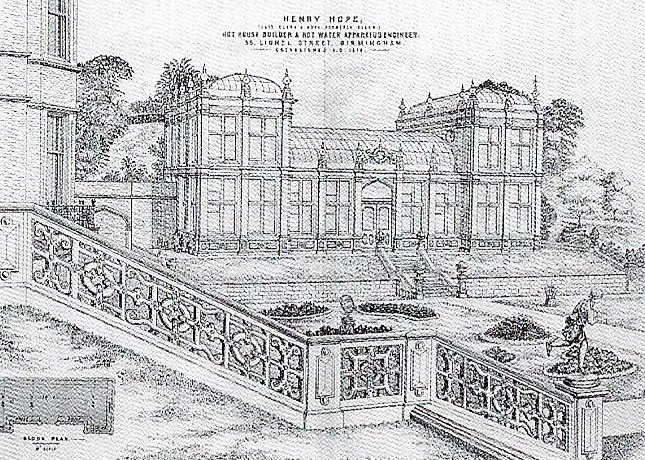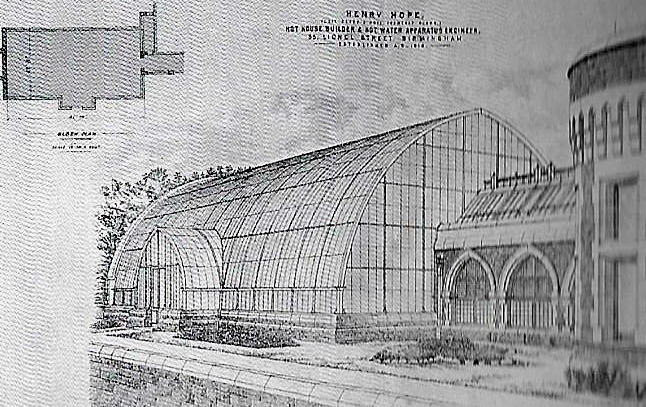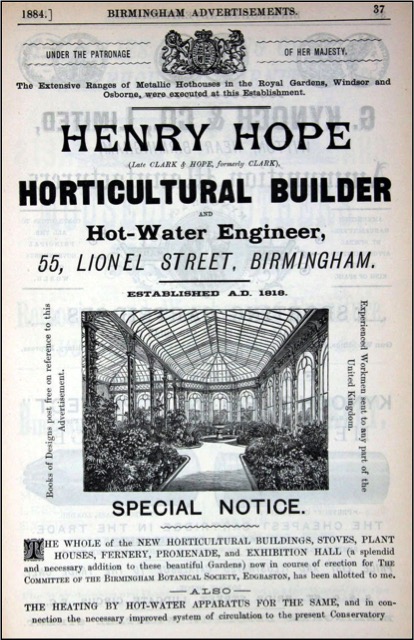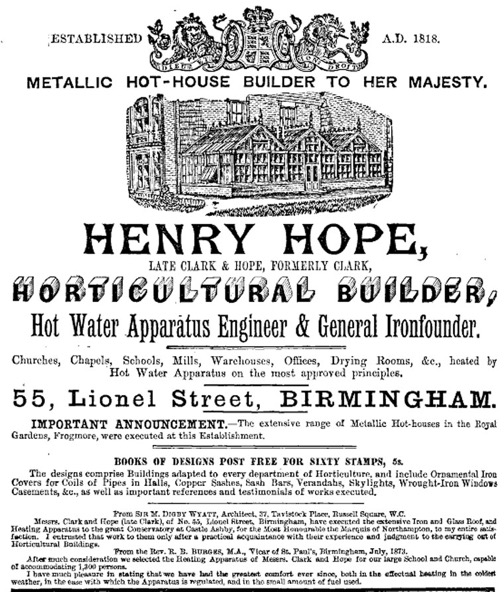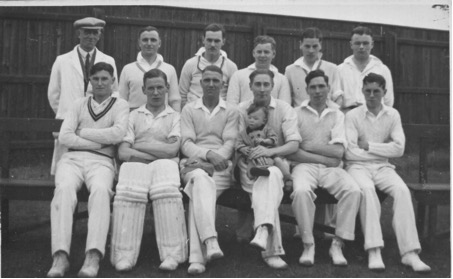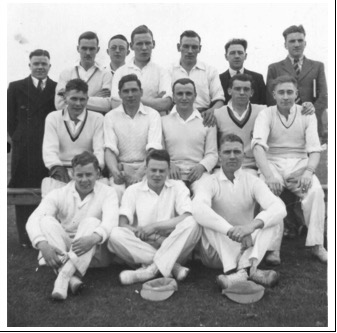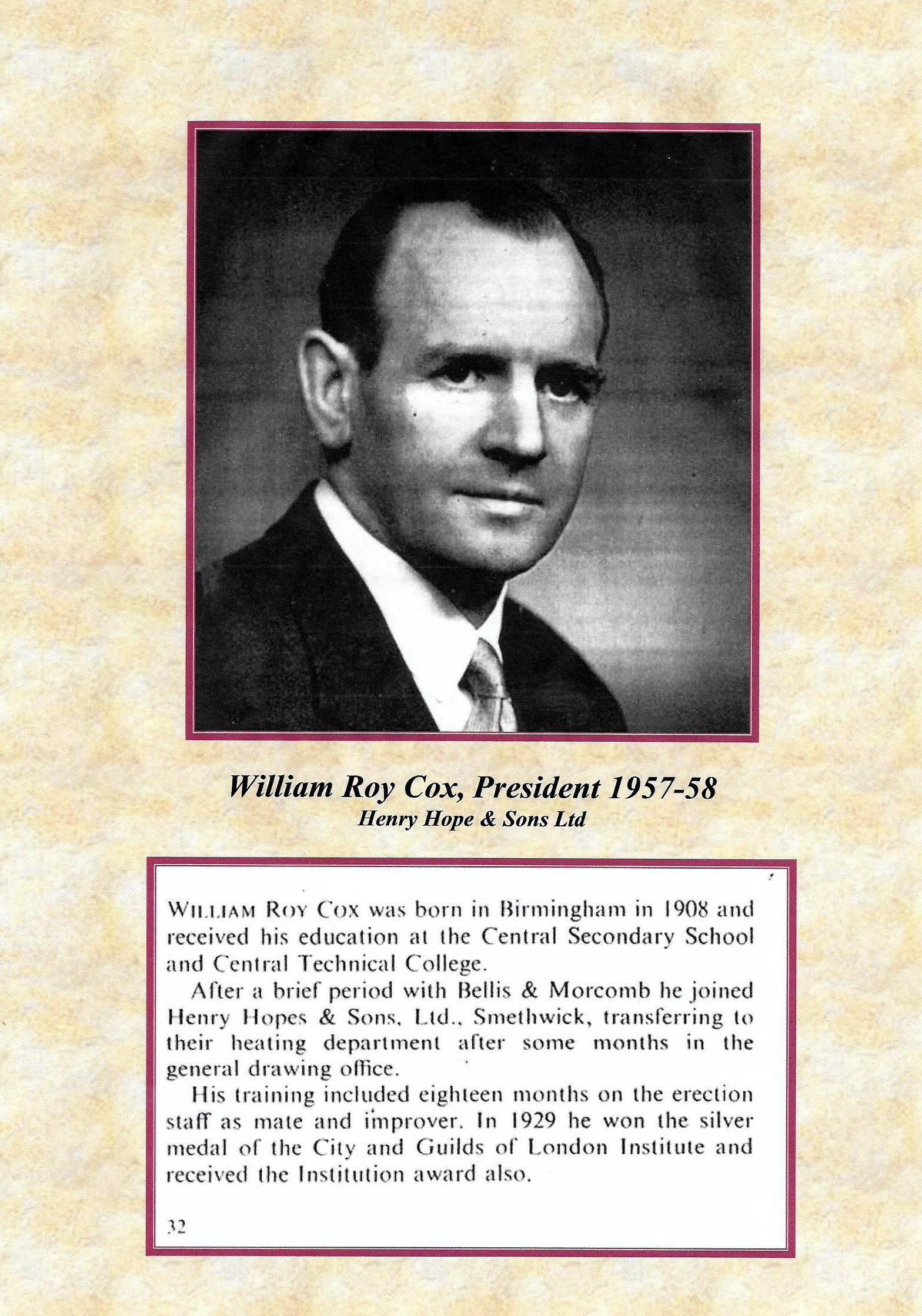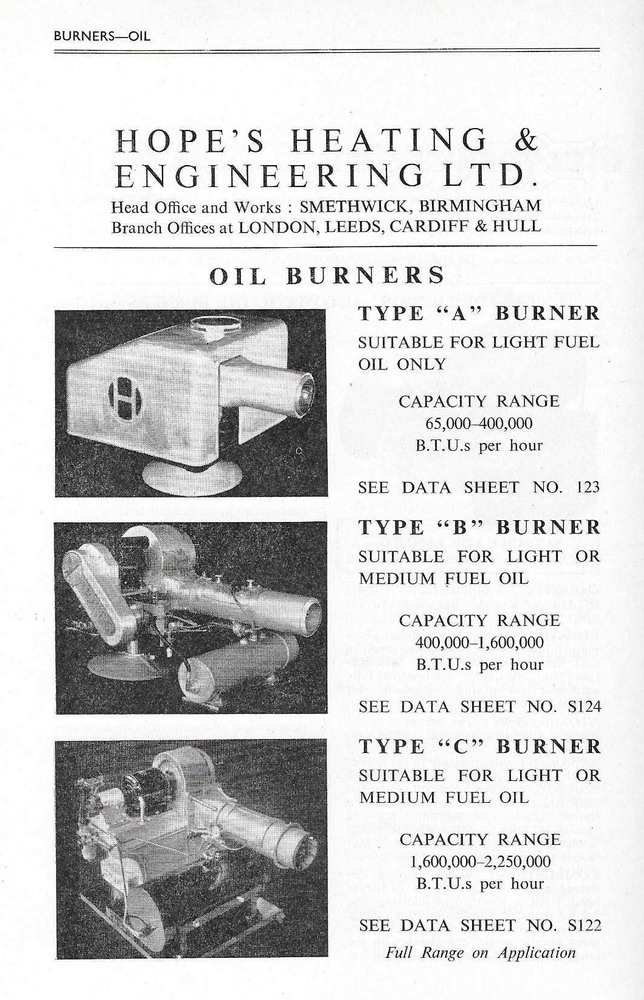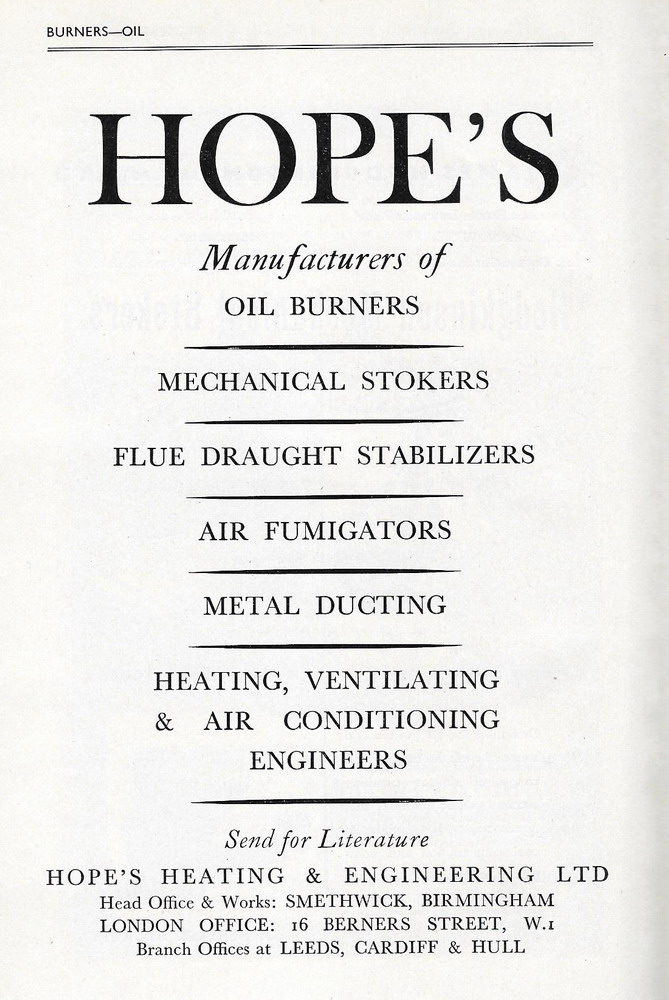Henry Hope & Sons
Webpages under construction
The Group continues with its research for information about the firm of Henry Hope & Sons.
The webmaster would welcome contact from any family member, friends or ex-employees of
the firm who could provide additional information or photographs pertaining to either the
family or the firm. This is a story about a pivotal West Midlands industrial firm, with
150 years of history in the heating and ventilating industry.
a
short history of a pioneering
heating & ventilating firm.
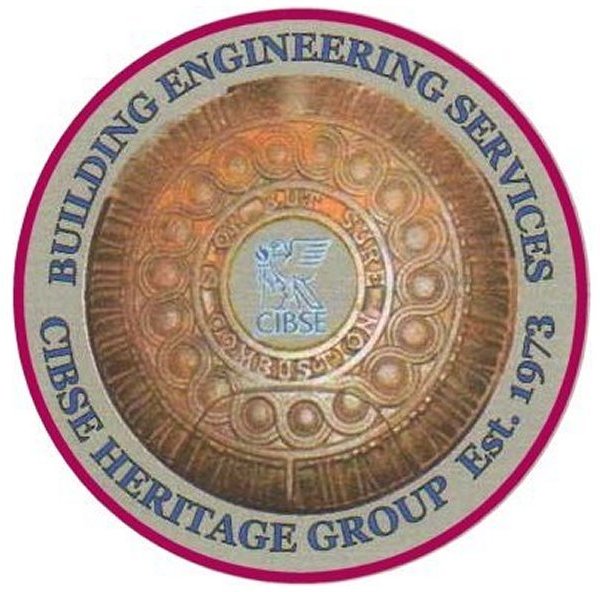
Researched, written and
prepared by
F J Ferris for the Heritage Group of the
CIBSE June 2017
F J Ferris for the Heritage Group of the
CIBSE June 2017
with acknowledgements to,
Brian
Roberts - Group Member
Michael Patrick
Michael Patrick
Jonathan
Marler
Andrew Hopkins
Paul Yunnie Group Member
The British Library
NADFAS
Birmingham Library & Archive
Andrew Hopkins
Paul Yunnie Group Member
The British Library
NADFAS
Birmingham Library & Archive
for
their assistance and information.

ORIGINS of the FIRM

The Family

Victorian Growth of the Firm

Photograph of the Sash Department employees taken circa 1909
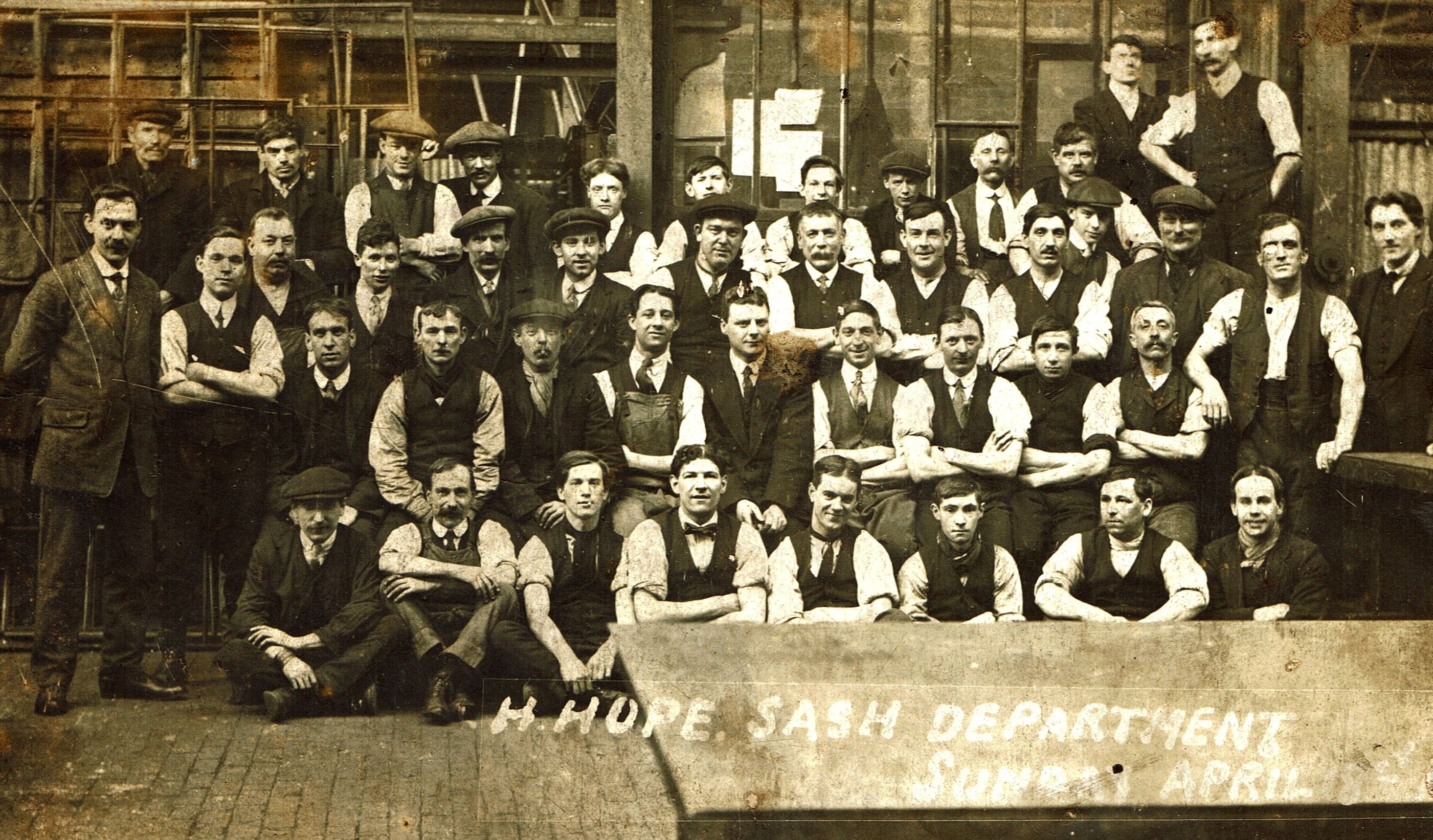
Photo kindly provided by Andrew Hopkins whose ancestral relation
is John Carney - front row third from the right

The firms football team in the 1912 - 1913 season displaying the cup
and shield that the team had won.
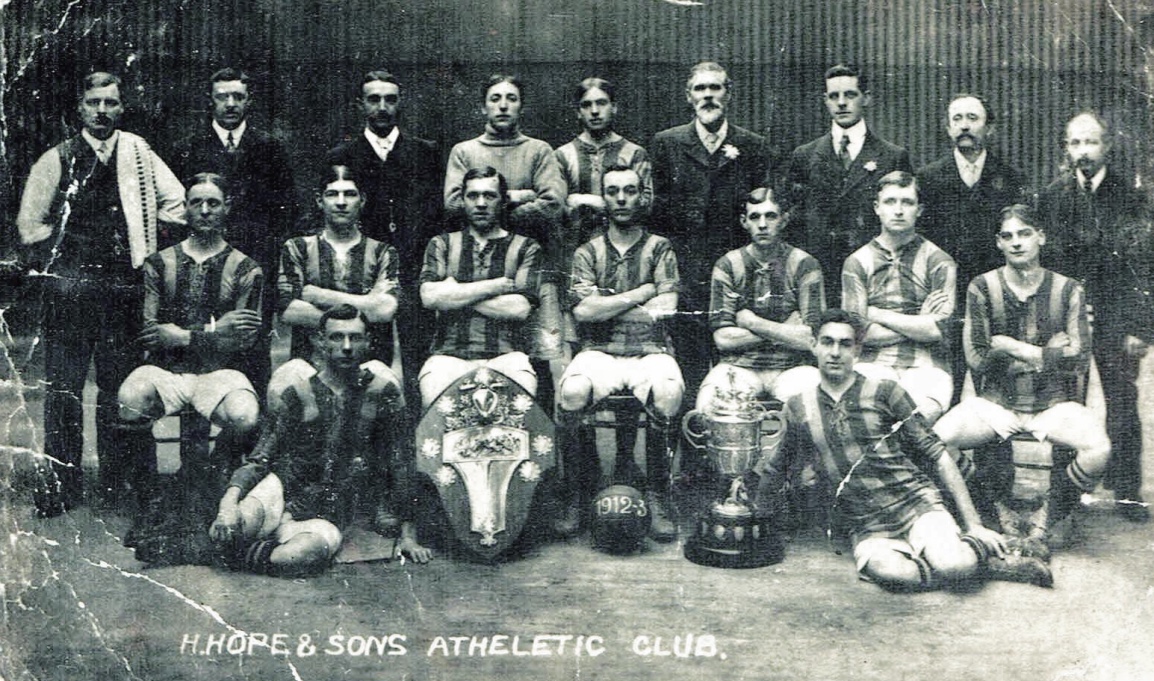
Photo kindly provided by Andrew Hopkins whose ancestral relation
is John Carney - middle row third from the right






To read a copy of the firm's in-house Newspaper called OUTLOOK .
.
This issue is Volume 2 No 4 dated October 1966
return to top of page

|
The
following webpages are an abridged
version of the book titled
A SHORT HISTORY OF HENRY HOPE & SONS 1818 - 1958 |
ORIGINS of the FIRM
|
The business of Henry
Hope & Sons was founded by Thomas Clark in
the autumn of 1818 at 55 Lionel Street,
Birmingham, where it remained for exactly 101
years. Known originally as Jones & Clark
with several other partners, who appear and
disappear during the passage of time. The
Clarks both father and son were the principal
owners. In the Birmingham trade directories
for 1820 the firm
manufactured Metallic Hothouses,
Horticultural Buildings of all descriptions,
patent copper sashes etc. It was a
Horticultural Builder for Royalty, the
Aristocracy and Landed Gentry.
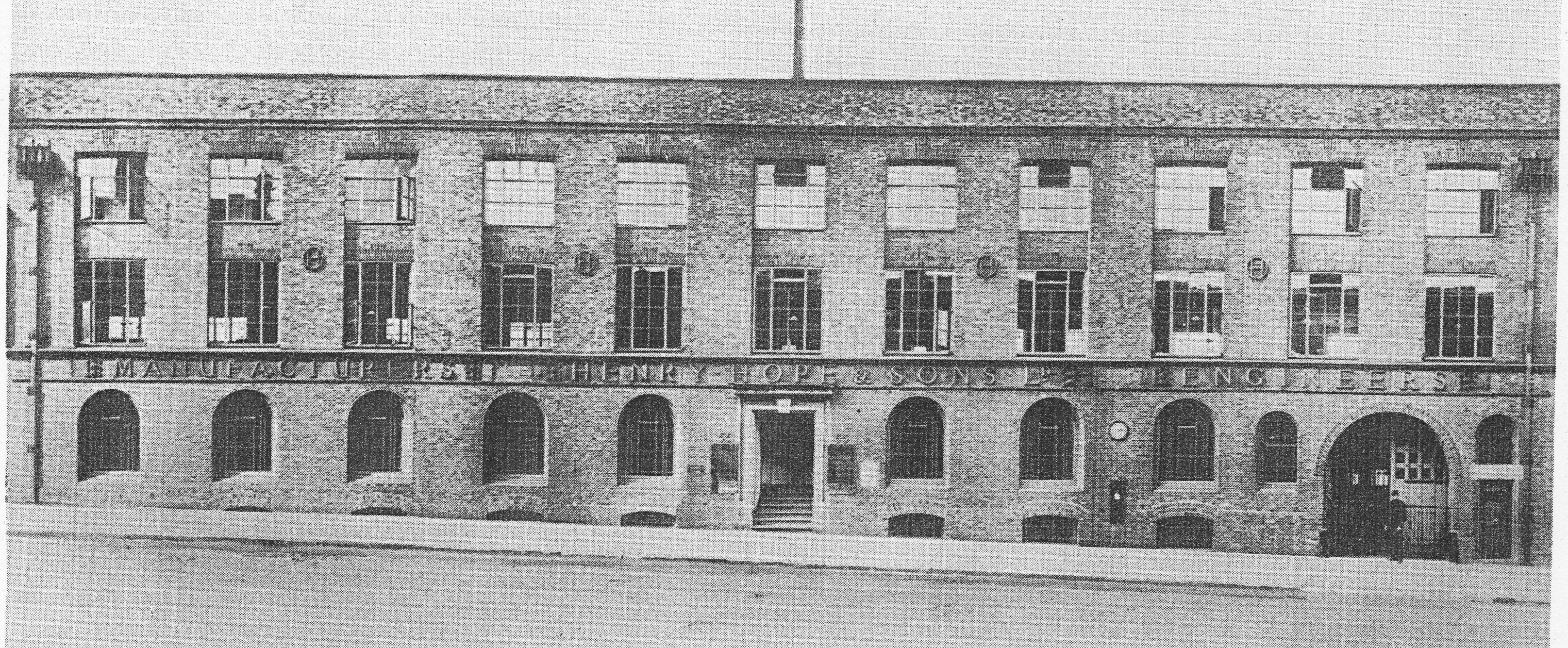 The firms first
order on 5th October 1818 which pre-dates
the reign of Queen Victoria was for a
lean-to greenhouse costing £110. These
early orders were mostly for horticultural
buildings and made from wood as well as
metal. The earliest order of an all metal
building dates from 1819 for Lord Arundel at
Wardour Park, Salisbury Wiltshire.
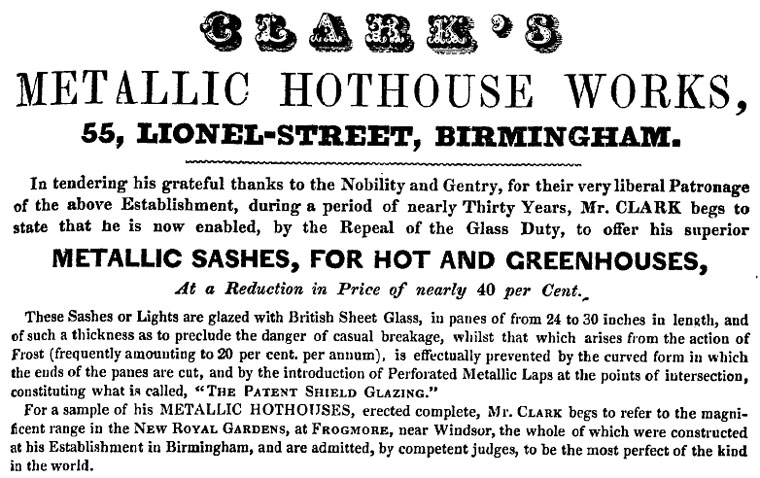
The firms original order books are still preserved and running almost continuously with very few breaks until 1898. |
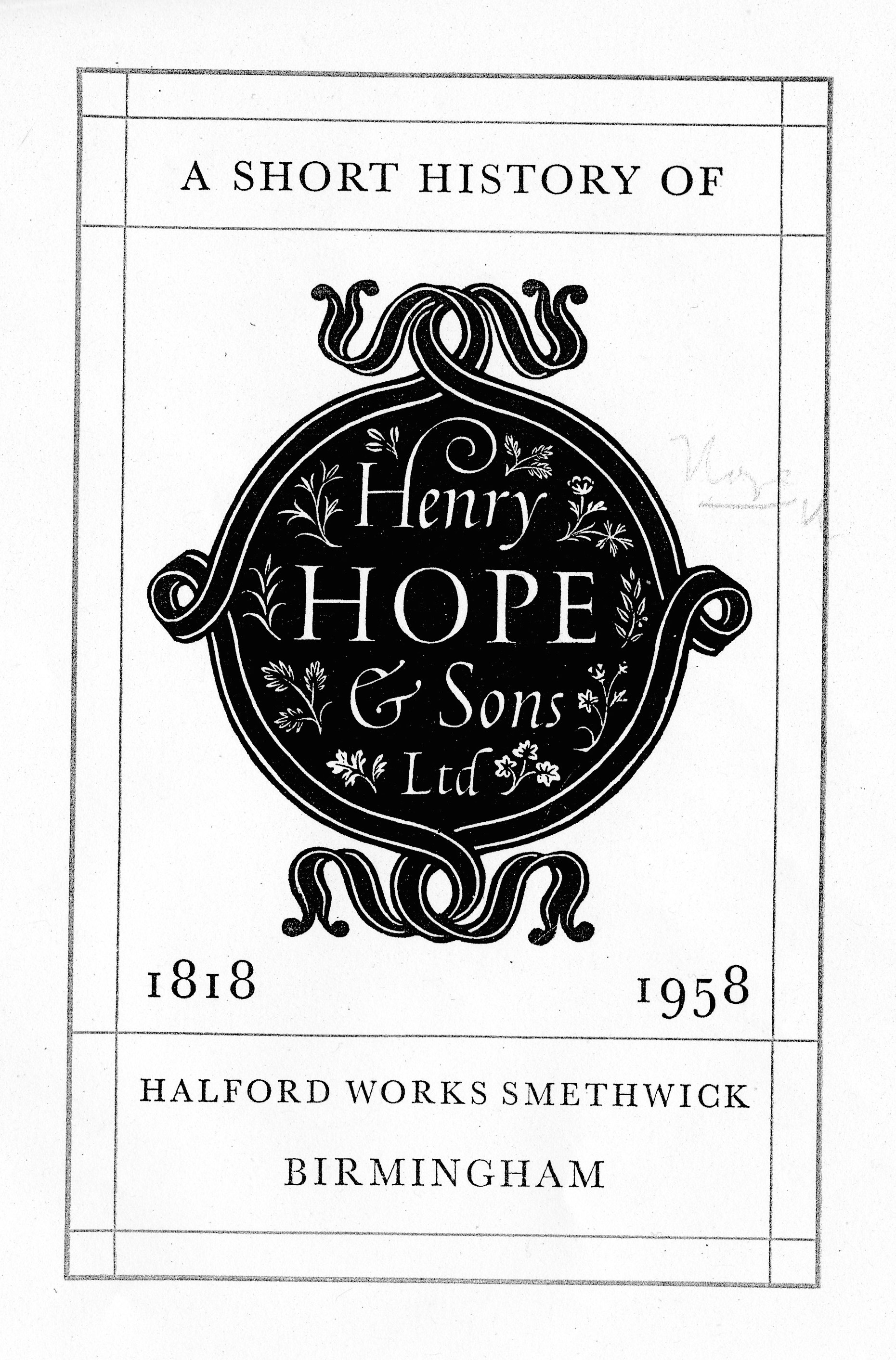 |
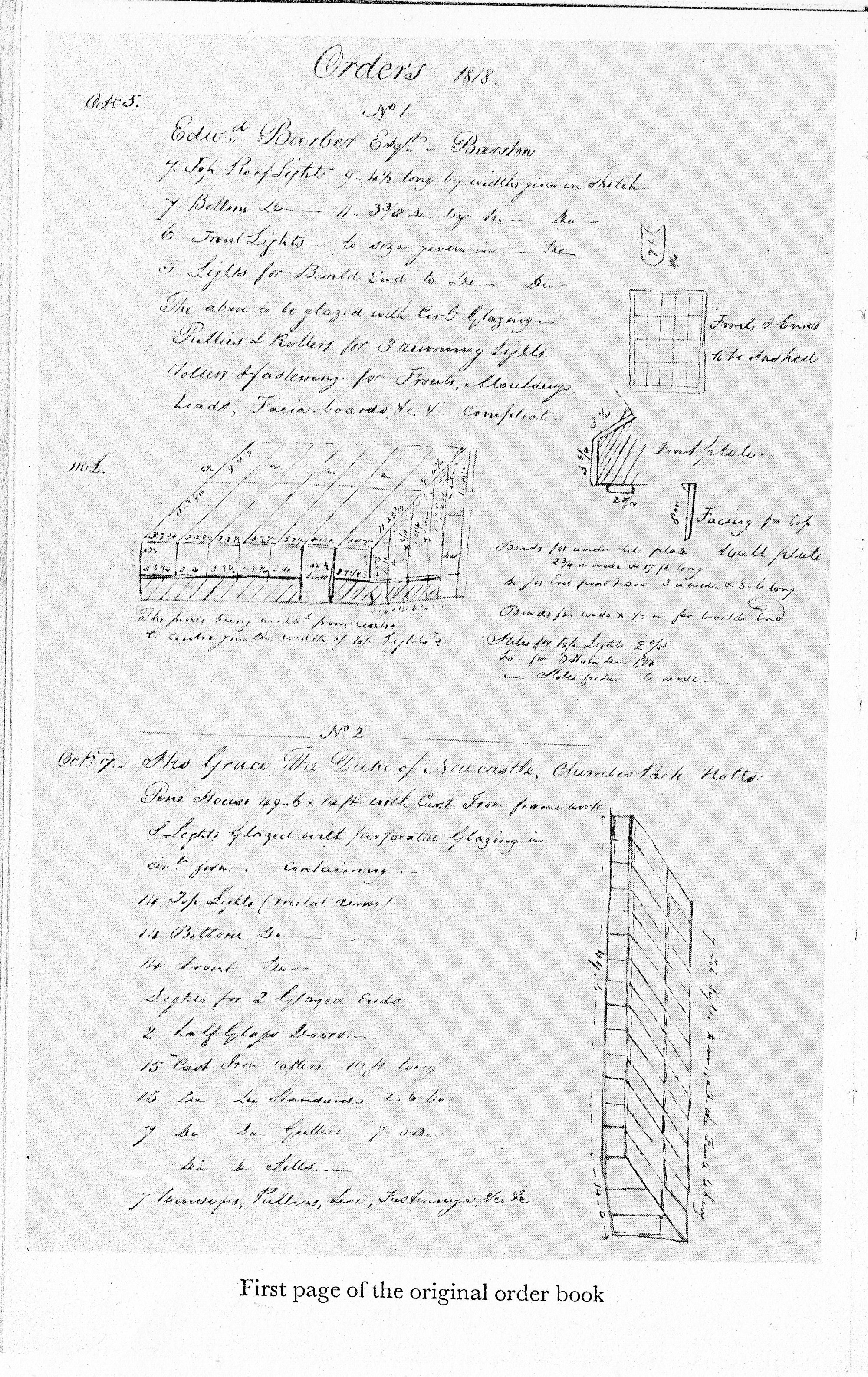 |
The Family
 |
Henry Hope was born in
Birmingham in 1831.
He joined the firm as a boy from
school and spent his whole working
life in the business. He was dynamic,
enthusiastic and a talented
draughtsman. He was the second eldest
of three sons of his parents James and
Sarah.
Henry married Sarah Emily Biddle in 1867 and raised five children, Henry Donald, John Arthur, Constance Mary, Adeline Emily, and Ralph Walter. Henry's three sons joined the firm with Henry Donald Hope becoming Chairman when his father stepped down as Chairman in 1908. He remained as Chairman until his death in 1953. His son Michael then became Chairman. Donald was responsible for the firm's great expansion and being held in high regard by the industry. Henry's grandson Ralph became a fighter pilot in WWII and sadly was killed in action over Croydon during the Battle of Britain in 1940 Henry died at the age of ninety in 1921 and was well remembered as a mild mannered gentleman with a white beard. His wife Sarah Emily died 5 years later aged 86 in 1926 |
Victorian Growth of the Firm
|
Thomas Clark set his
sights on providing buildings for the
nobility, The Duke of Newcastle at Clumber
Park, Trafalgar House for Earl Nelson,
Earl Spenser, Viscount Heard, Viscount
Curzon, Countess of Clancarry and Nuneham
Park, Oxford for the Archbishop of York.
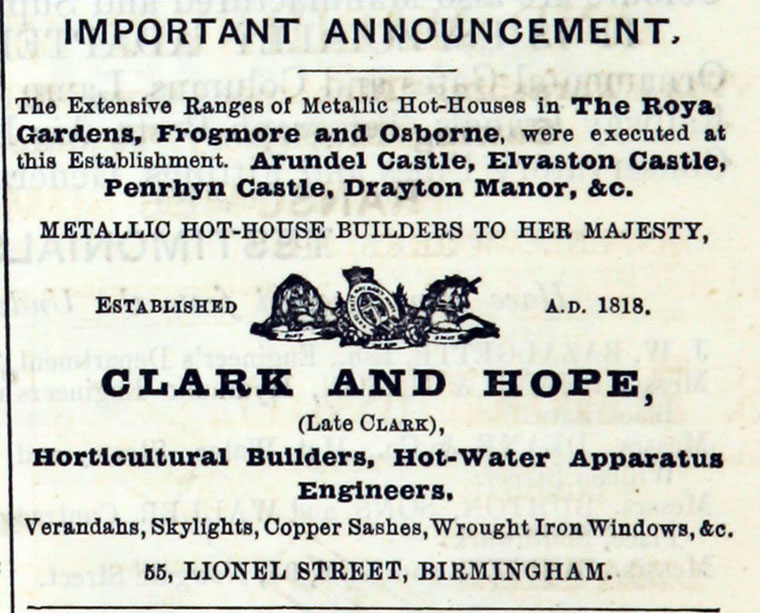
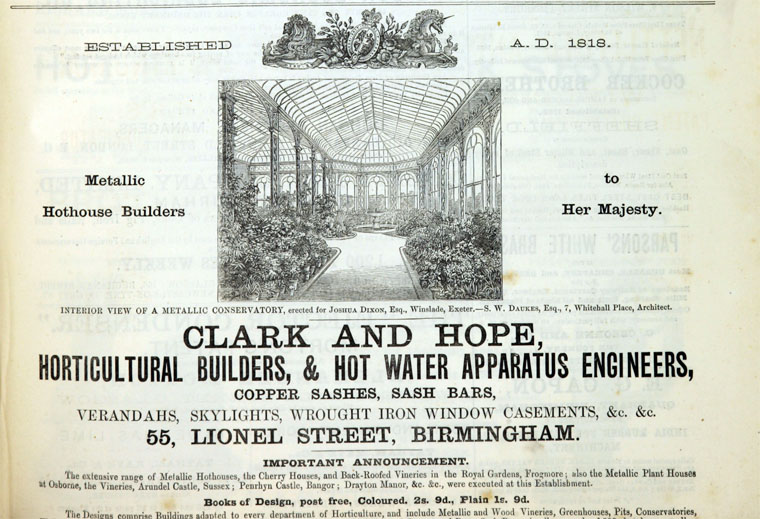 Later orders came from Queen Victoria for large hothouses at her premises Osborne House on the Isle of Wight, and Frogmore near Windsor. 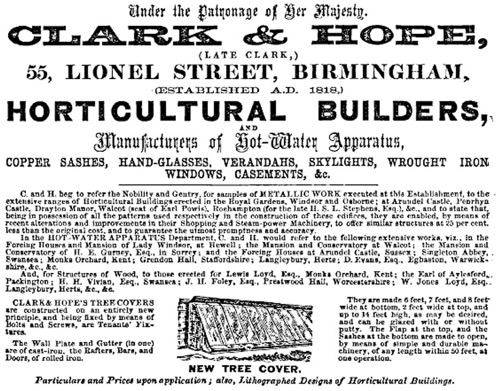
From 1845 - 1857 the firm made all the bronze windows for Charles Barry's new Palace of Westminster, and by 1887 metal windows had become a sufficiently important part of the business to form a separate catalogue. In 1864 Henry Hope then aged thirty three was taken into partnership and the firm's name changed to Clark & Hope. When Henry joined the firm the business had expanded to become Horticultural Builders and Hot Water Apparatus Manufacturers. It was a high profile firm which advertised its wares "Under the Patronage of her Majesty Queen Victoria". The firm was awarded the Royal Warrant by Queen Victoria as her Metallic Hothouse Builder.
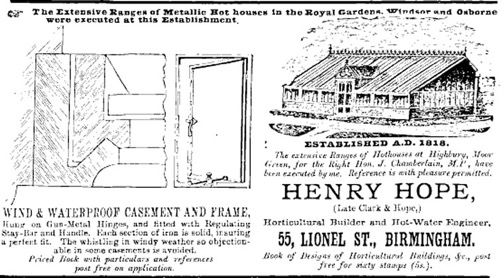 In
1875 on the death or retirement of
Thomas Clark junior, Henry Hope
became the sole owner and traded
under his name Advertisements of the
firm at that time bear the title "Henry
Hope, late Clark & Hope
formerly Clark", when it was
trading as "Horticultural
Builder, Hot Water Engineer and
General Ironfounder". Churches,
Chapels, Schools, Mills,
Warehouses, Offices, Drying
Rooms etc, heated by Hot Water
Apparatus on the most approved
principles.
When Henry's
two sons joined the firm there was a
further name change to Henry Hope &
Sons
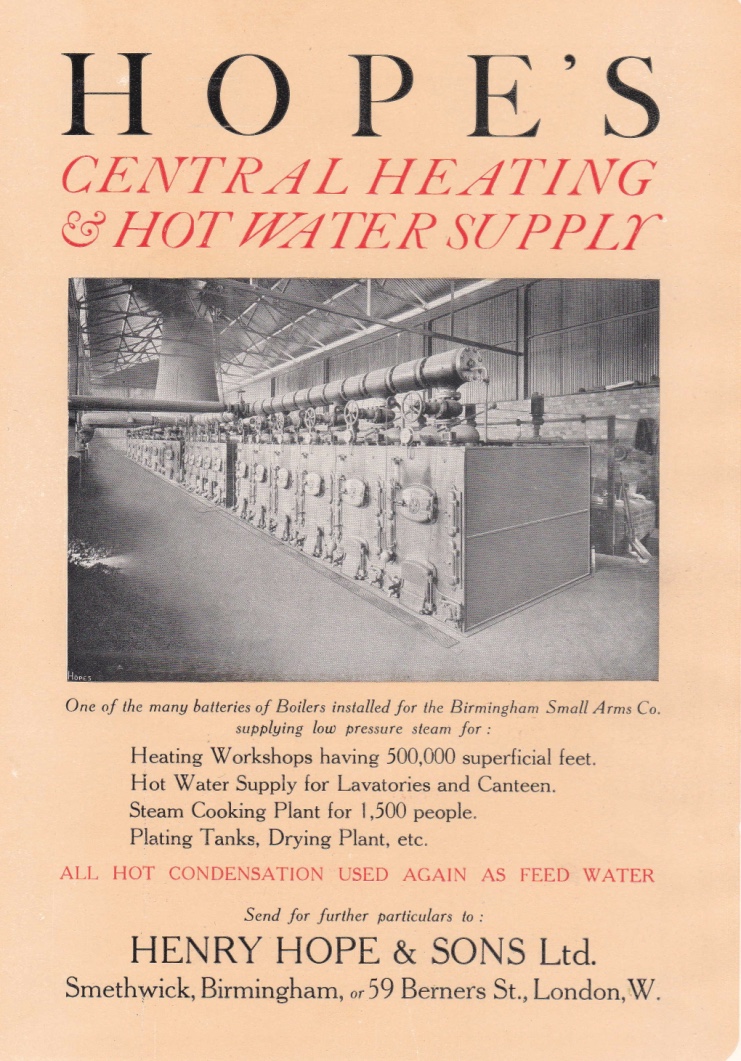 In 1898 the
business became a limited company with the
name Henry Hope & Sons Ltd having an
issued capital of £20,100. Its first directors were
Henry Hope (Chairman), H Donald Hope, J
Arthur Hope and J S Nettlefol d. Joseph
chamberlain 1786 - 1974 & Caroline
harben 1808 - 1875
|
|
FAMILY
HISTORY What is of interest with the
Hope family history is their connection
through marriage to the family of Neville
Chamberlain who was Prime Minister
(1937-1940) at the start of the WWII in
September 1939. Most people remember him
returning from a visit to Hitler and
holding up that slip of Chamberlain
Family Tree
Joseph
Chamberlain 1786 - 1874 & Caroline
Harben 1808 - 1875
Joseph Chamberlain 1836 - 1914 & 1868 Florence Clara Kenrick 1847 - 1875 Arthur Neville Chamberlain 1863 - 1940 & 1911 Annie de Vere Cole 1883 - 1967 Arthur Chamberlain 1843 - 1913 & 1870 Louisa Kendrick 1847 - 1892 Bertha Chamberlain 1874 - 1942 & 1900 Henry Donald Hope 1869 - |
Photograph of the Sash Department employees taken circa 1909

Photo kindly provided by Andrew Hopkins whose ancestral relation
is John Carney - front row third from the right
The firms football team in the 1912 - 1913 season displaying the cup
and shield that the team had won.

Photo kindly provided by Andrew Hopkins whose ancestral relation
is John Carney - middle row third from the right
| The employees of the firm were
heavily involved in all the sporting
activities in the West Midlands area, and
provided cricket and soccer teams for the
local leagues. 1938 CRICKET
TEAM
Similar
to many of the other quality companies
in the Industrial Midlands, Henry Hope
& Sons had a well-maintained
sports ground and encouraged sporting
activities.
1938 SPORTS DAY 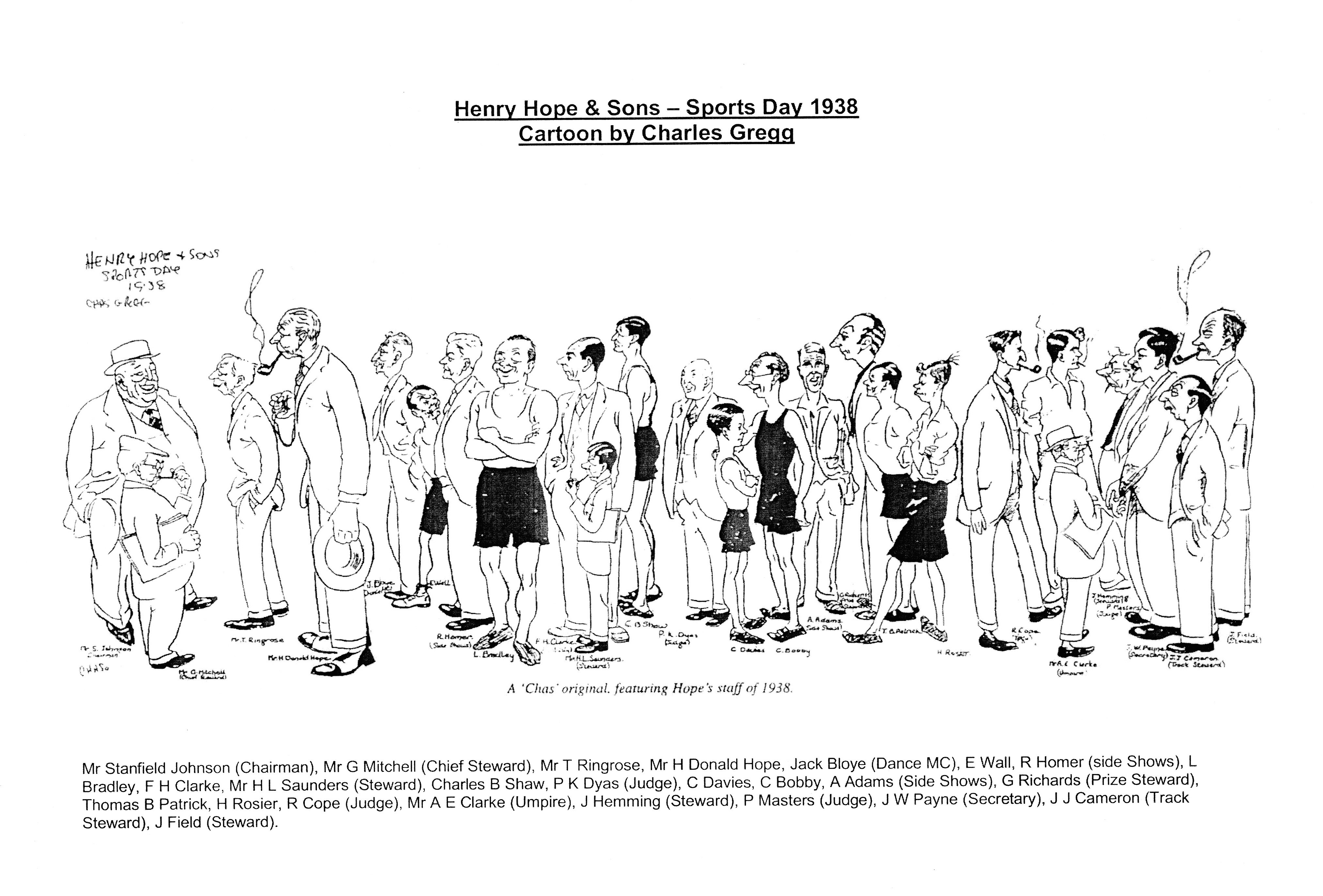 |
| Bomb
Disposal Auxiliary 1941
- 1944 Henry Hope & Sons
employees did their bit for the war effort by
forming a bomb disposal team of volunteers.
The mens ages don't seem to fit the classic "Dad's Army" pattern, so we could assume that they were mostly in "reserved occupations". A number of them were involved in the re-roofing of bomb-damaged factories in Coventry, Birmingham and the Black Country earlier in the war. They could have received explosives training and the group undertook exercises, which included unearthing buried bombs. No doubt the really dangerous job of de-fusing was left to the UXB professionals that we have seen featured in the television series. The group made a valuable contribution by providing their mechanical engineering and draughtsman's skills to dismantle such "made-safe" devices and prepare detailed drawings of the latest weapons and fuses found in the unexploded condition for immediate distribution to other units in the country. As the use of anti-personnel bombs and mines became more widespread, this probably saved a number of lives. 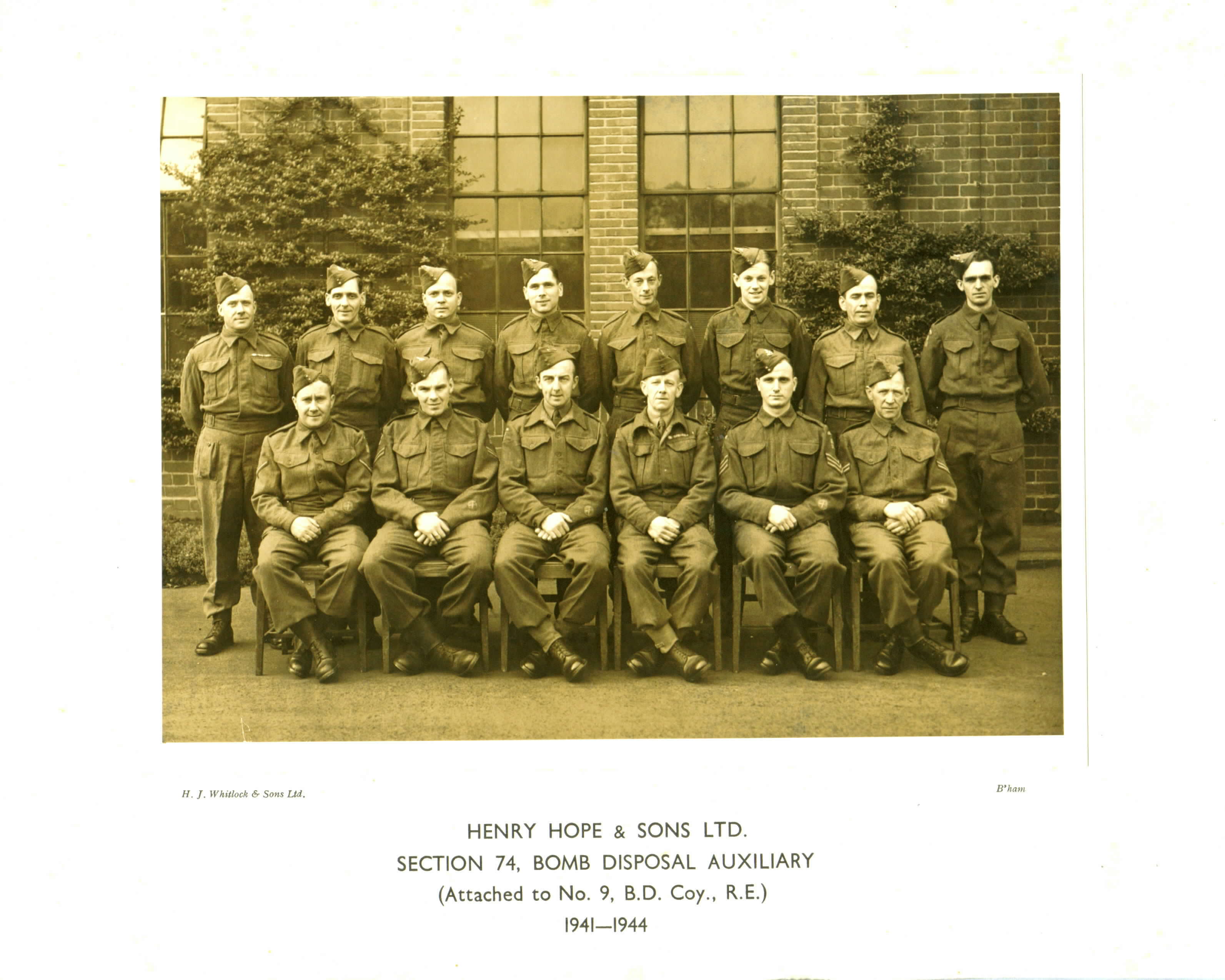 Top row - ?? - Barney Cull - George McEwan - Hadyn Paddison- ?? - ?? - ?? -?? Bottom Row - ?? - Wilf Dutton - ?? - ?? - Tom Patrick - ?? Photo and information kindly provided by Michael Patrick |
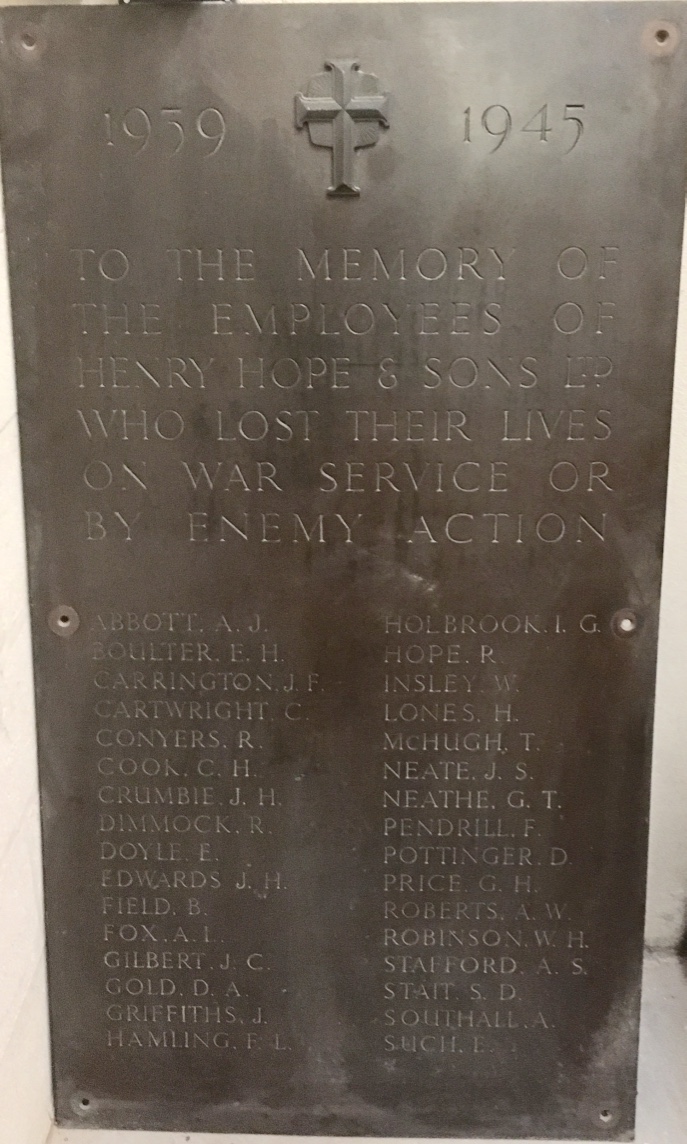 |
What is particularly
poignant about this list of company employees killed in WWII is that one member of the Hope family is included. Ralph Hope a grandson of Henry Hope was a fighter pilot in the Battle of Britain who was shot down and killed over Croydon in 1940. This plaque has recently been recovered from storage. It will now be put on display in a local Smethwick Council building which is open to the public. |
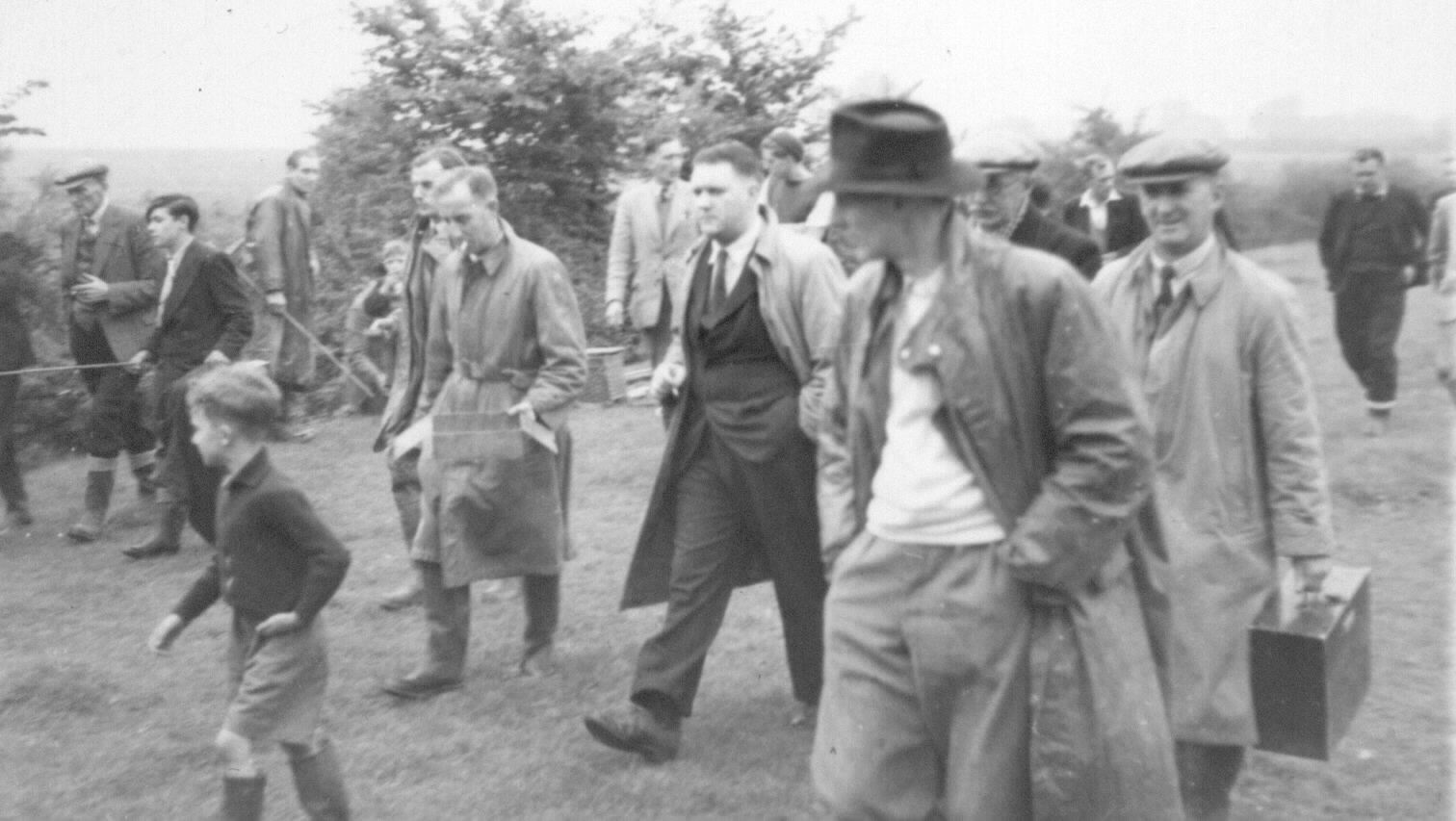 A group of employees in the 1950's
on their way to a fishing match including Tom
Patrick, Harry Lunn, Barney Cull and Frank
Ball.
|
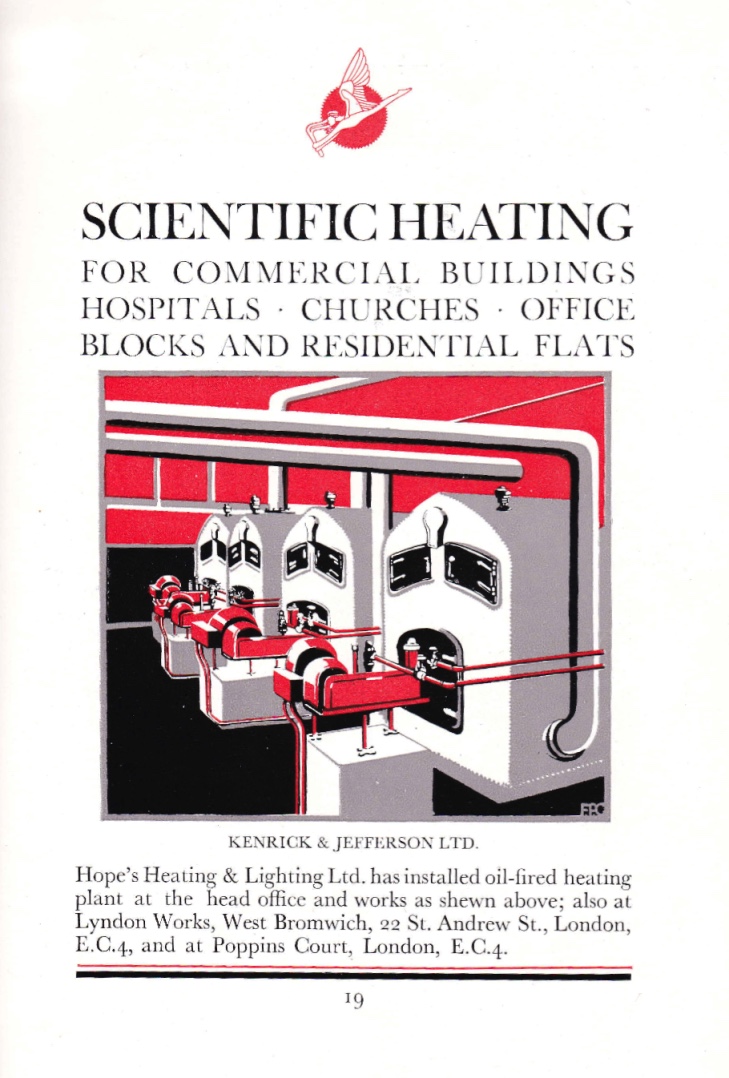 |
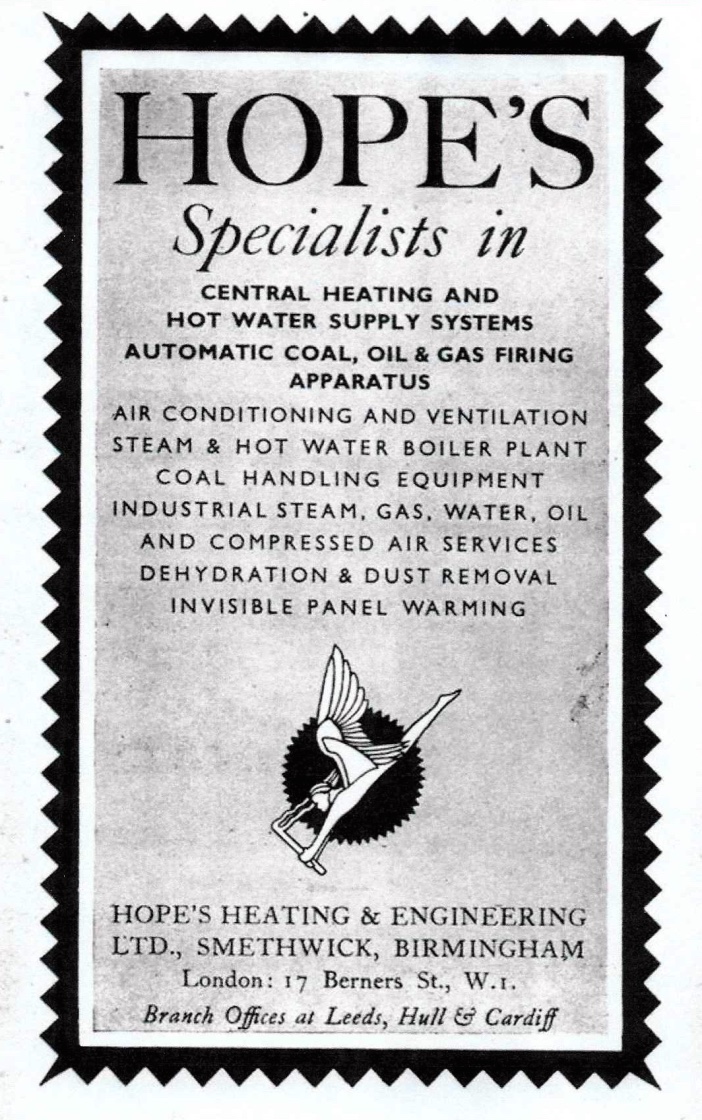 |
In later years after the company changed its name to Hope's Heating & Engineering Ltd it expanded the business into the design and manufacture of automatic oil burners and mechanical stokers. The company could now provide a complete package for the Client that included Heating, Ventilating, Electrics, Fuel Supply and Firing equipment.
|
To read a copy of the firm's in-house Newspaper called OUTLOOK
This issue is Volume 2 No 4 dated October 1966
|
The firm would make
a presentation to long service employees
with an
inscribed wrist watch or other suitable timepiece. Below is a typical example. 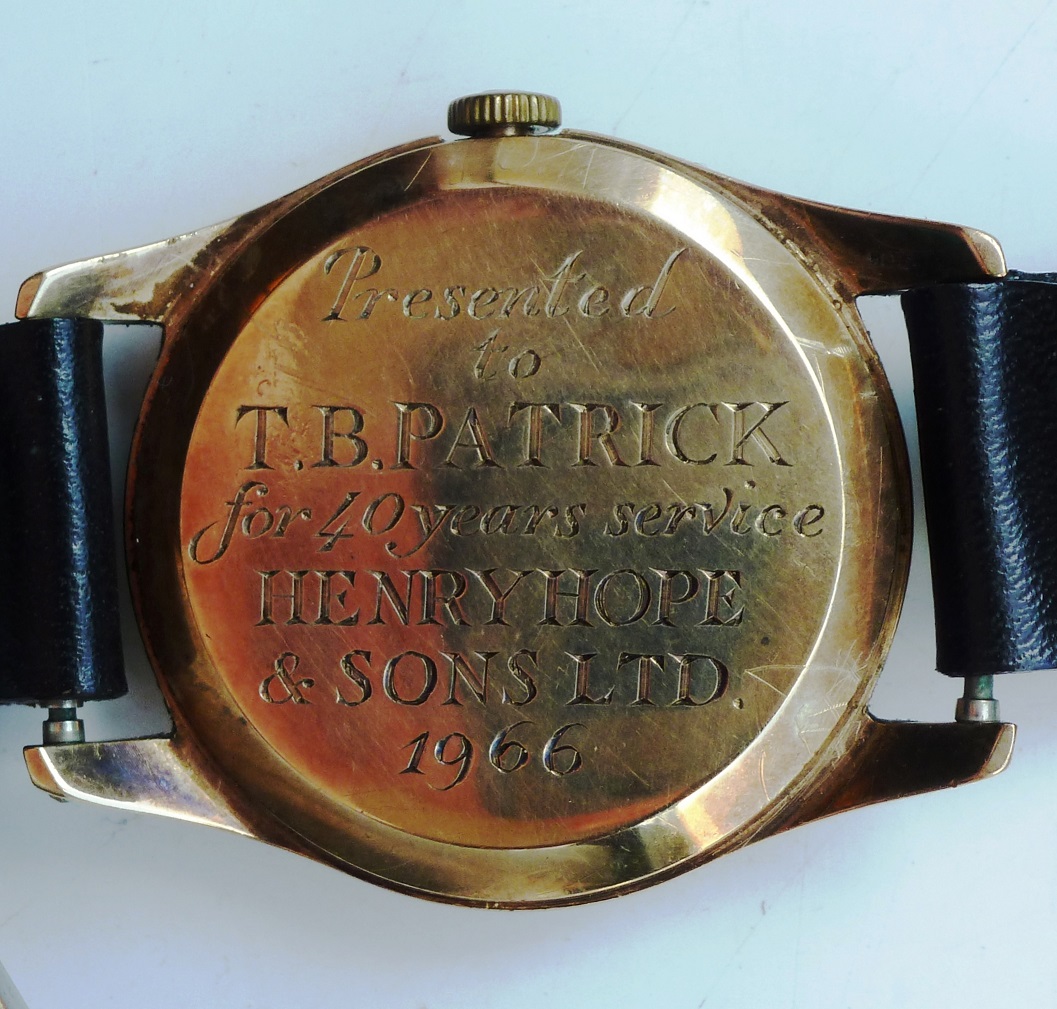 |
return to top of page
